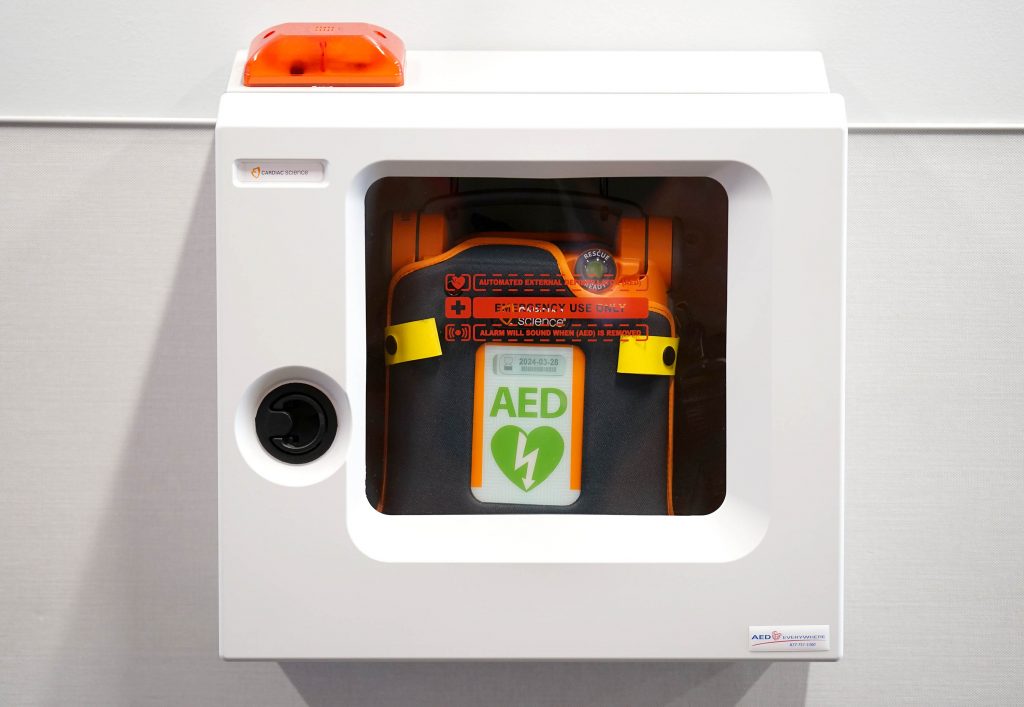
When Buffalo Bills trainers saved the life of Damar Hamlin after he collapsed during a recent National Football League game, the availability of automated external defibrillators (AEDs) became national news.
Grand Canyon University’s Environmental, Health, and Safety (EHS) Department recognized the need long ago and has increased the number of AEDs on campus from a dozen to more than 100.
Environmental, Health, and Safety Director Brad Anderer and his team have made it their mission to spread awareness of the defibrillators around campus and provide training.
“We are trying to get these up as soon as possible, get signage up so people know,” he said.
Sudden cardiac arrest (SCA) is the leading cause of death among student athletes. One of the causes of SCA is Commotio Cordis, which can be triggered by a blow to the chest cavity.
The median age of people who experience Commotio Cordis is 14. The reason: The chest cavity wall of adolescents is less developed.

But SCA can occur for other reasons. In 2018, GCU volleyball player Camden Gianni collapsed at a practice session and was revived by athletic trainer Deborah Carter and special assistant to the head coach Dennis Flowers on the Antelope Gymnasium floor. Four rounds of cardiopulmonary resuscitation and the shock from the AED got his heart pumping again.

An AED easily diagnoses inactive heartbeat. If the AED, combined with CPR, is administered quickly, the chance of a full recovery is high. Once the AED is opened, a voice will activate and instruct the user to perform a few steps.
The basic steps for using an AED are:
- Confirm unresponsiveness
- Instruct someone to call 911 or call 911 yourself (if no one is in the vicinity)
- Retrieve the AED
- Open the airway and check for breathing
- Check for pulse
- Open the AED and wait for automated instruction
- It will instruct you to attach the AED electrode pads
- Wait for the AED to analyze the rhythm
- If the AED advises to do so, hit “shock”
If there are any departments that would like training for AED, CPR, first aid or any other topics related to health and safety, the EHS Department can be reached at 602-639-7279.
****
Related content:
GCU video: Camden Gianni: The heart of determination















